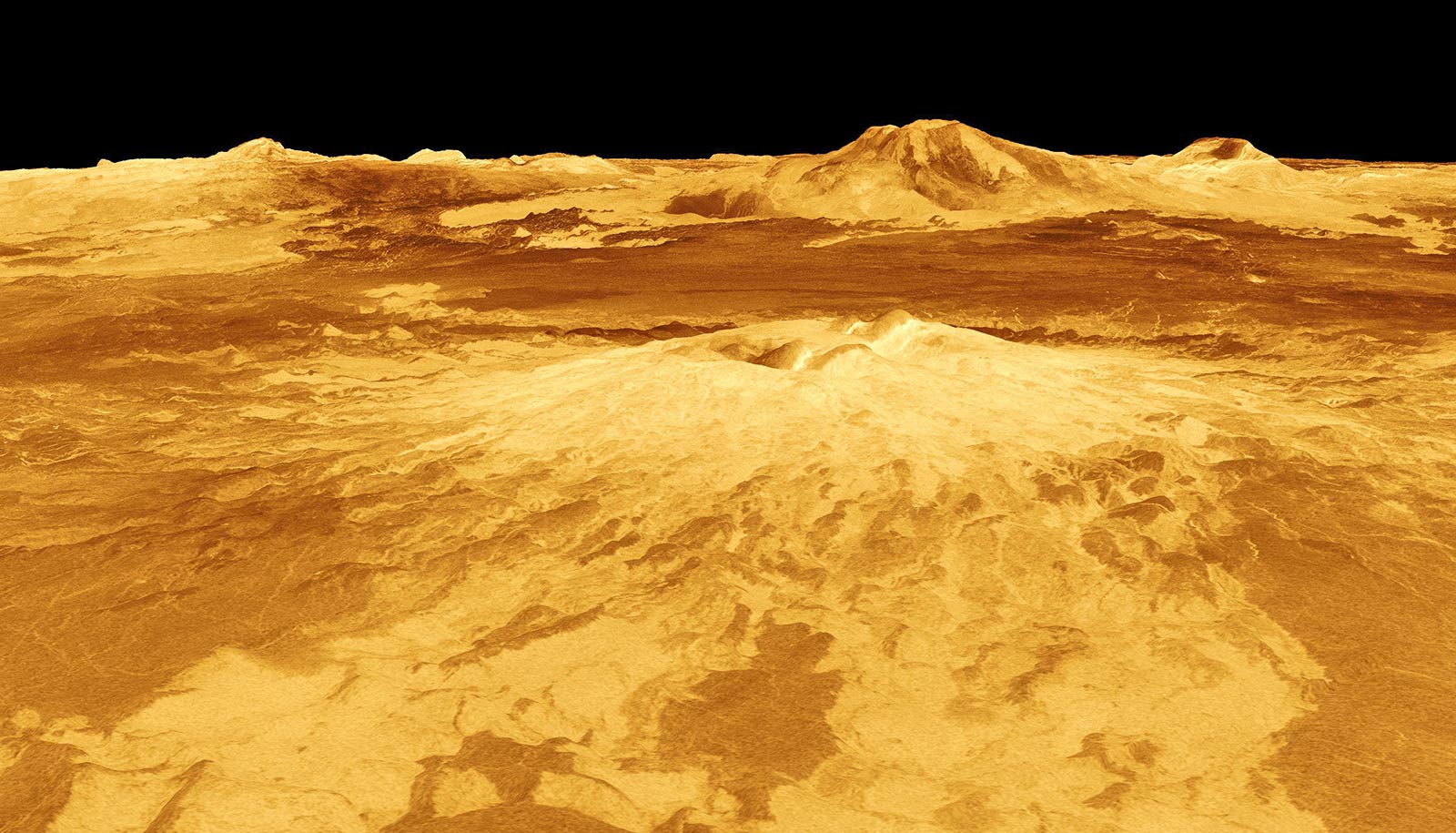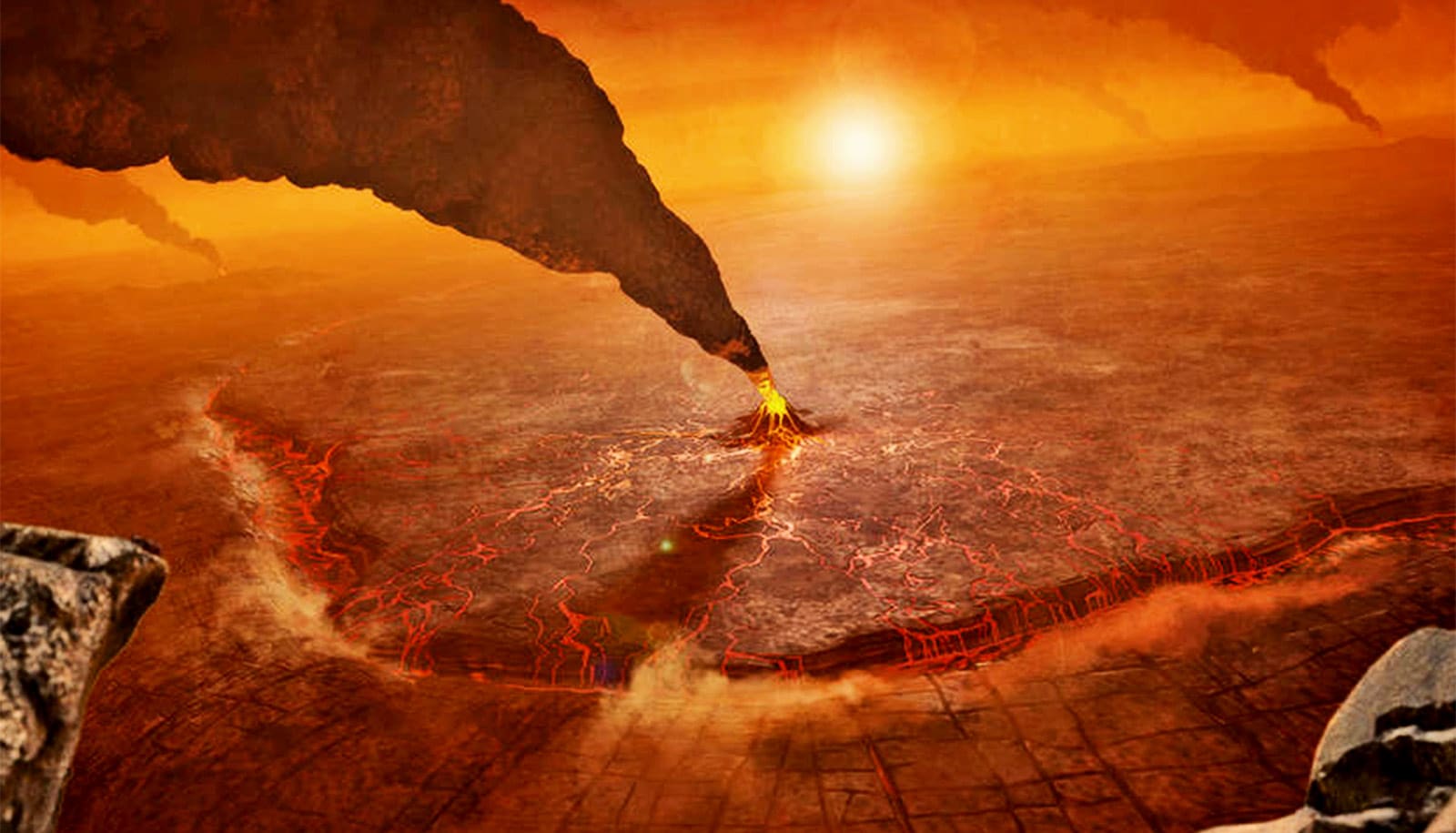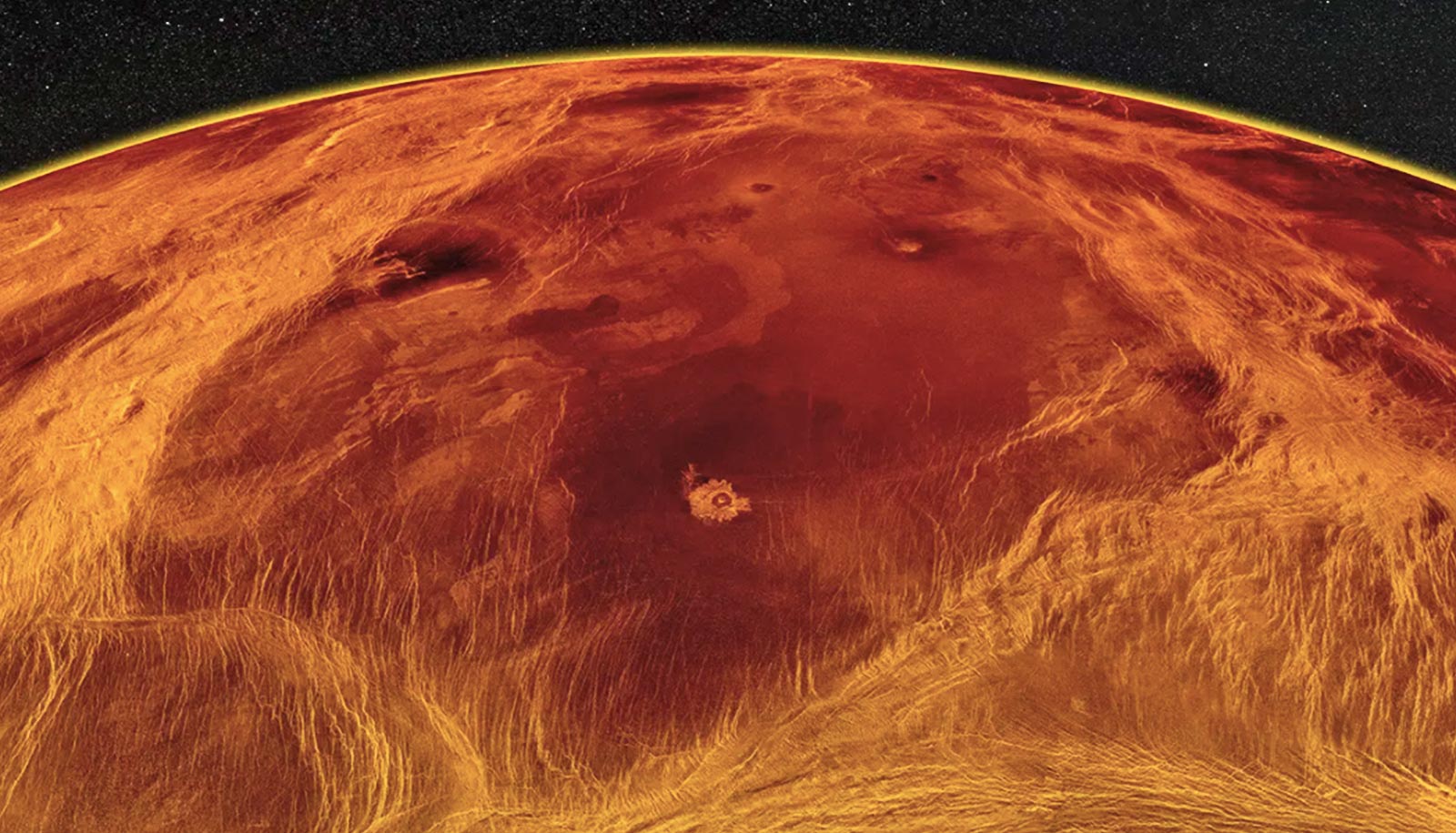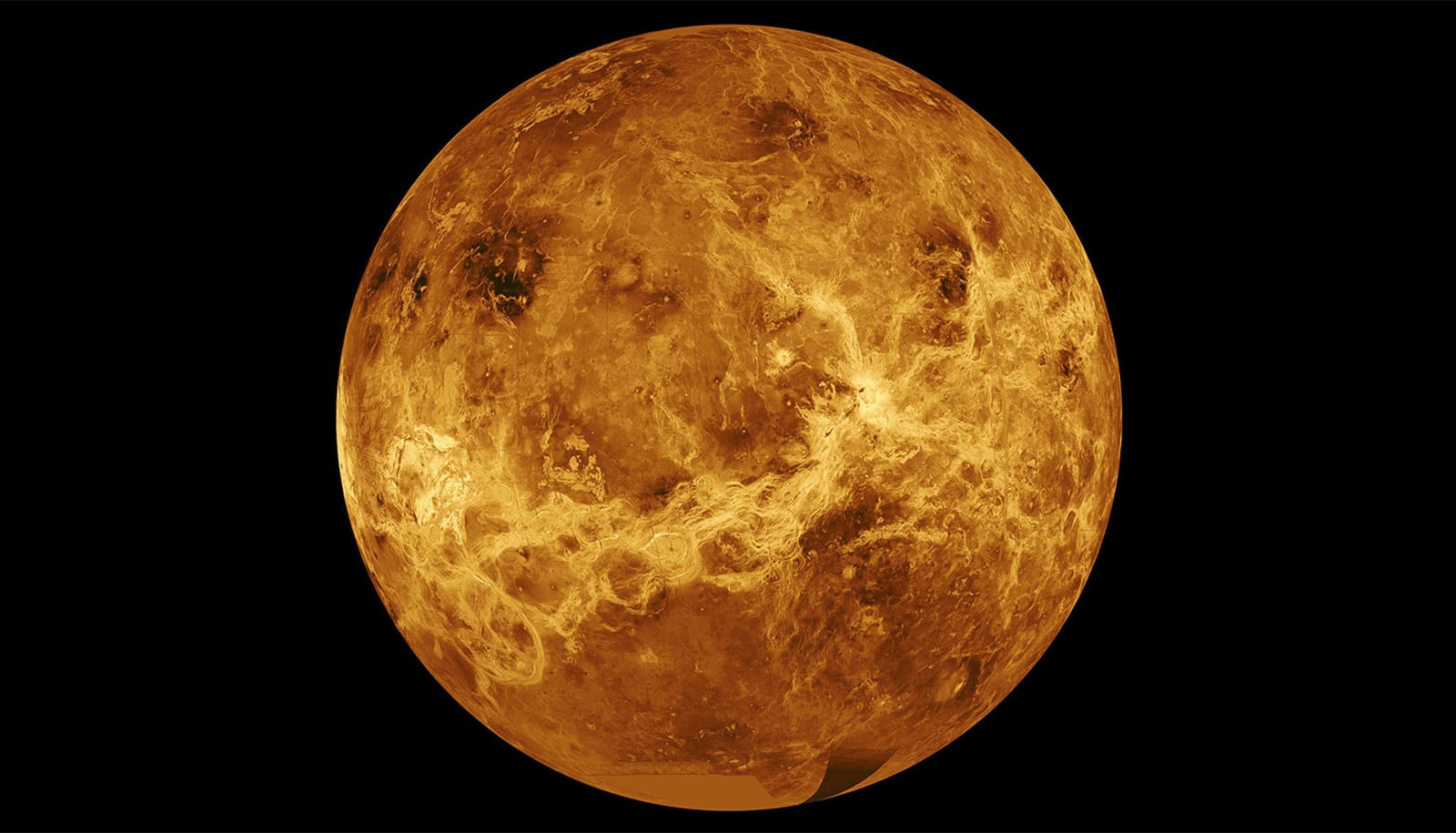Scientists have created a new map of 85,000 volcanoes on Venus.
“This paper provides the most comprehensive map of all volcanic edifices on Venus ever compiled,” says Paul Byrne, an associate professor of earth and planetary sciences at Washington University in St. Louis.
“It provides researchers with an enormously valuable database for understanding volcanism on that planet—a key planetary process, but for Venus is something about which we know very little, even though it’s a world about the same size as our own.”
Byrne and Rebecca Hahn, a graduate student in earth and planetary sciences, used radar imagery from NASA’s Magellan mission to Venus to catalog volcanoes across the planet at a global scale. Their resulting database contains 85,000 volcanoes, about 99% of which are less than 3 miles (5 km) in diameter.
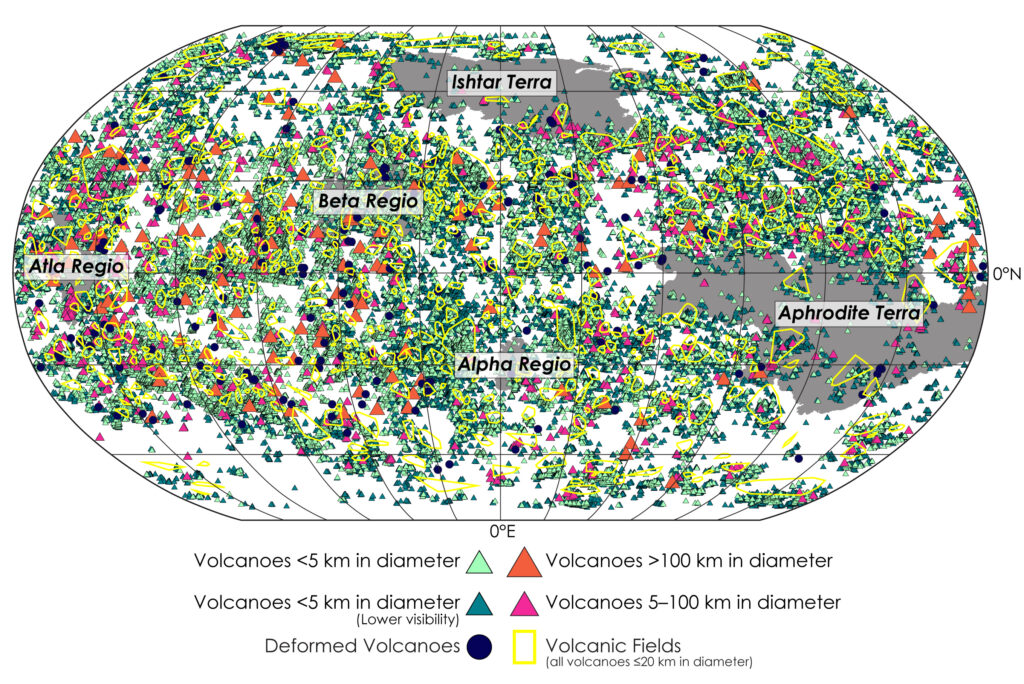
“Since NASA’s Magellan mission in the 1990s, we’ve had numerous major questions about Venus’ geology, including its volcanic characteristics,” Byrne says. “But with the recent discovery of active volcanism on Venus, understanding just where volcanoes are concentrated on the planet, how many there are, how big they are, etc., becomes all the more important—especially since we’ll have new data for Venus in the coming years.”
“We came up with this idea of putting together a global catalog because no one’s done it at this scale before,” says Hahn, first author of the paper in JGR Planets. “It was tedious, but I had experience using ArcGIS software, which is what I used to build the map. That tool wasn’t available when these data first became available back in the ’90s. People back then were manually hand-drawing circles around the volcanoes, when I can just do it on my computer.”
“This new database will enable scientists to think about where else to search for evidence of recent geological activity,” says Byrne, who is a faculty fellow of the university’s McDonnell Center for the Space Sciences. “We can do it either by trawling through the decades-old Magellan data (as the new Science paper did) or by analyzing future data and comparing it with Magellan data.”
Smaller volcanoes on Venus
The new study includes detailed analyses of where volcanoes are, where and how they’re clustered, and how their spatial distributions compare with geophysical properties of the planet such as crustal thickness.
Taken together, the work provides the most comprehensive understanding of Venus’ volcanic properties—and perhaps of any world’s volcanism so far.
That’s because, although we know a great deal about the volcanoes on Earth that are on land, there are still likely a great many yet to be discovered under the oceans. Lacking oceans of its own, Venus’ entire surface can be viewed with Magellan radar imagery.
Although there are volcanoes across almost the entire surface of Venus, the scientists found relatively fewer volcanoes in the 20-100 km diameter range, which may be a function of magma availability and eruption rate, they surmise.
Byrne and Hahn also wanted to take a closer look at smaller volcanoes on Venus, those less than 3 miles across that have been overlooked by previous volcano hunters.
“They’re the most common volcanic feature on the planet: they represent about 99% of my dataset,” Hahn says. “We looked at their distribution using different spatial statistics to figure out whether the volcanoes are clustered around other structures on Venus, or if they’re grouped in certain areas.”
Venus missions ahead
The new volcanoes dataset is publicly available for other scientists to use.
“We’ve already heard from colleagues that they’ve downloaded the data and are starting to analyze it—which is exactly what we want,” Byrne says. “Other people will come up with questions we haven’t, about volcano shape, size, distribution, timing of activity in different parts of the planet, you name it. I’m excited to see what they can figure out with the new database!”
And if 85,000 volcanoes on Venus seems like a large number, Hahn says it’s actually conservative. She believes there are hundreds of thousands of additional geologic features that have some volcanic properties lurking on the surface of Venus. They’re just too small to get picked up.
“A volcano 1 kilometer in diameter in the Magellan data would be 7 pixels across, which is really hard to see,” Hahn says. “But with improved resolution, we could be able to resolve those structures.”
And it’s exactly that kind of data that future missions to Venus will acquire in the 2030s.
“NASA and ESA (the European Space Agency) are each sending a mission to Venus in the early 2030s to take high-resolution radar images of the surface,” Byrne says. “With those images, we’ll be able to search for those smaller volcanoes we predict are there.
“This is one of the most exciting discoveries we’ve made for Venus—with data that are decades old!” Byrne says. “But there are still a huge number of questions we have for Venus that we can’t answer, for which we have to get into the clouds and onto the surface.
“We’re just getting started,” he says.
